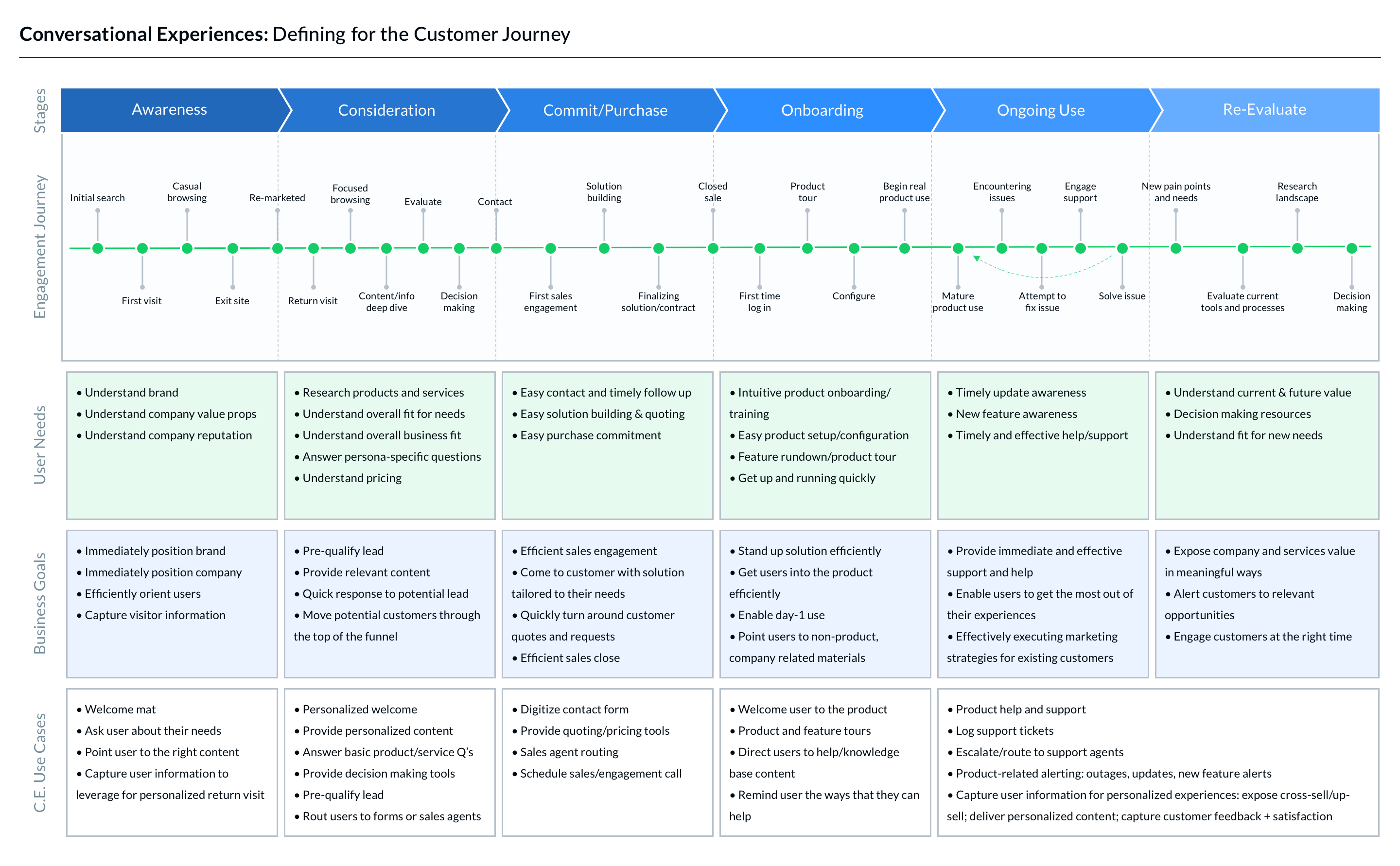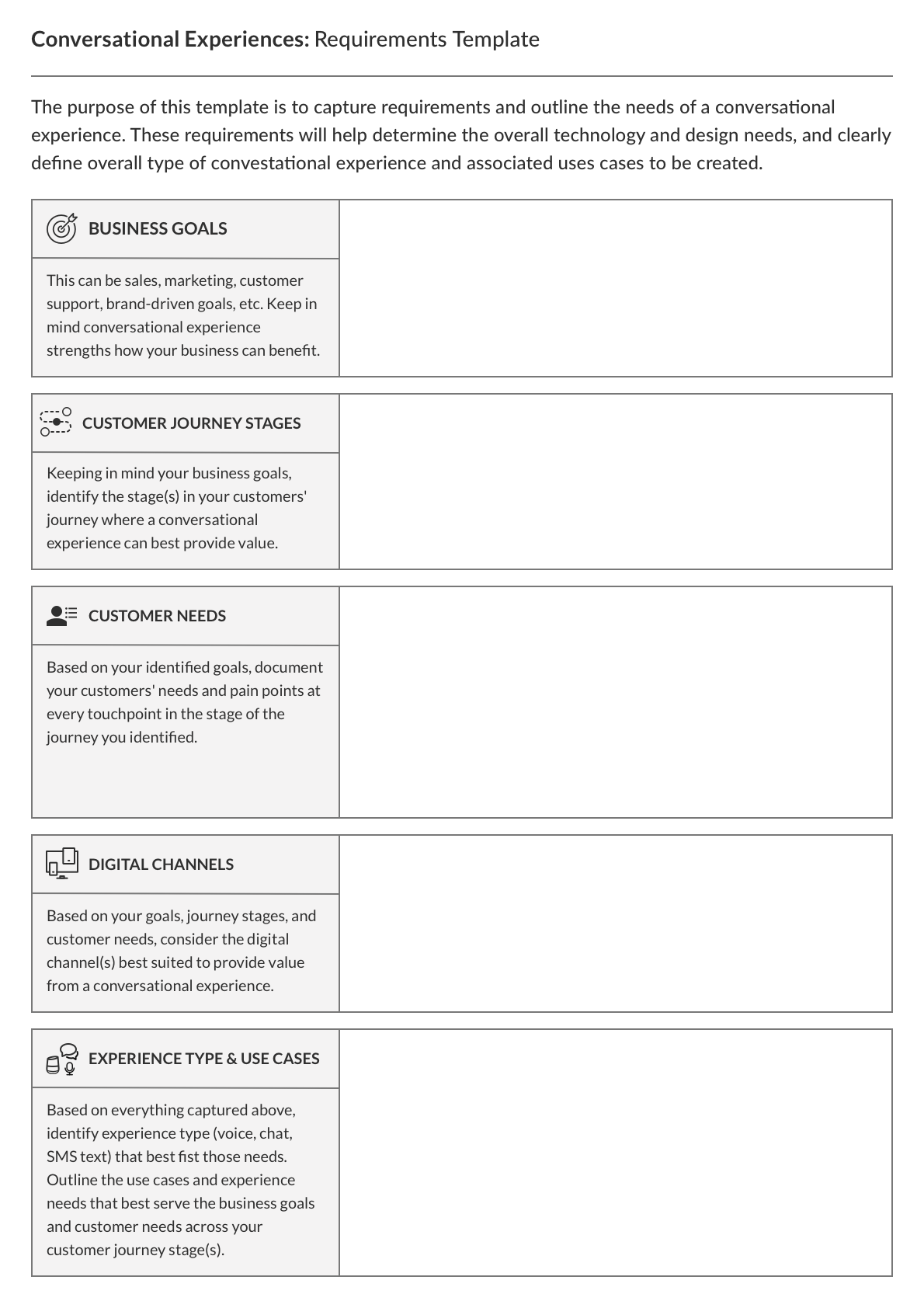Covid-19 And The Rise Of Conversational Experiences
As the COVID-19 pandemic continues throughout 2020, businesses across every industry have had to rethink how they can effectively conduct business. These problems are new and unique to organizations, requiring significant changes to deliver on existing customer experiences while also adapting to new customer needs and expectations. Adapting to these changes has taken time, effort, and new approaches to problem-solving. For those of us that work in digital, we have been fortunate to receive these challenges as opportunities for new work and ultimately being part of the solution.
Our clients are coming to us with automated CX challenges, and are particularly interested in experimenting with chatbots and conversational experiences to support self-service needs. During the early months of the pandemic, customer service teams received rapid increases in support requests to ticketing and call centers. Findings from Zendesk’s Benchmark dataset looked at 23,000 companies and saw a 24% global increase in weekly ticket volume when compared to 2019.
After seeing record-high numbers in the early months of the crisis, it appears some industries are seeing positive improvements to customer support capabilities with the adoption of messaging and self-service solutions. These recent results are encouraging, but many enterprises are still struggling to meet customer support needs. Rushing to launch a chatbot or virtual assistant won’t solve all customer support needs, but it should alleviate the common issues.
I’ve spent the last couple of years specializing in conversational experiences, researching the latest technologies and trends, as well as designing and building experiences for clients in healthcare, fin-tech, and professional services. There’s a lot that goes into creating a chatbot or virtual assistant, and I’ve found that there is no single path to creating a great conversational experience. It is more a broad set of problems, processes, technologies, and solutions coming together in an interconnected but singular experience.
The Conversational Design Playbook
This article is the first part of a 3-part series that outlines an end-to-end framework for delivering great conversational experiences. This playbook is by no means an exhaustive, step-by-step guide, but it will help designers to understand each step of the process, what to consider, and the problems to solve for when designing, building, and optimizing a conversational experience. This article covers part 1 of the playbook – Research & Define.
Understanding Conversational Experiences
More than once I’ve worked with a company that is looking to launch a chatbot or virtual assistant with little or no definition as to what a solution could look like, how it’s delivered, or why it is being created in the first place. It’s not wrong to want what has been touted as an industry trend for so long. It’s critical to understand both the value and limitations of conversational experiences, how they can solve problems, and what to consider when making UX, design, and technology decisions. Start by diving into the following areas to build a strong shared understanding of conversational experiences:
Definition of Conversational Experiences: A base understanding of what makes a conversational experience, and the difference between the two types of experiences:
State of the Industry:
- What is the current state and future outlook of the industry?
- Who are the leaders and rising players in the industry?
- What is the state of consumer use and perception of the industry?
State of the Technology:
- What are the driving technologies of conversational experiences, how do they differ, and how do they work together?
- Natural language processing, understanding, and generation (NLP, NLU, NLG) in conversational experiences
- Artificial intelligence and machine learning (ML) in conversational experiences
- NLP + ML in conversational experiences
The resources above build a great baseline for understanding what exactly a conversational experience is, and the nuts and bolts of what goes into creating a solution. While this is critical knowledge, what I found more important is understanding the value of conversational experiences. Most people interested in the space have a general understanding, which is to help end-users accomplish specific tasks through human-computer interactions that mimic human conversation. From there, you can start to understand the value of conversational experiences by understanding your customers’ journeys and where a conversational experience fits into each touchpoint along the journey.
Understanding The Customer Lifecycle
As noted above, automated CX is a growing trend across industries. This does not only pertain to customer support, however. In terms of conversational experiences, there is value to be found at every stage of the customer journey. When I work with clients to help define their conversational experiences, I walk through the value of these experiences across the customer lifecycle. This helps them understand how a solution can help their business goals while providing an outline to identify the best areas of opportunity where they can provide value to customers.
In the example below, you can see how I documented a high-level customer journey and how it aligns with the value of a chatbot. At every journey-stage, I captured the user needs and business goals, and identified ways that a chatbot could deliver value:

The use cases featured in this example can be more detailed as the experience is further defined. But overall, designers can view these use cases as a good framework for the value that conversational experiences can deliver at each stage of the customer lifecycle:
Awareness: At the beginning of the journey, an experience delivers value by acting as more of a marketing touchpoint. It is a method to introduce a brand while immediately opening a messaging channel with customers. Examples
Consideration: As a customer continues their journey, an experience can move customers to the next stage of their journey by orienting them to content and information that is relevant to their needs. Here designers can optimize and narrow a customer’s consideration path by providing personalized content, product recommendations, and relevant decision-making information. Examples
Commit/Purchase: When customers are ready to commit to a purchase, an experience can deliver value through more robust interactions. In B2B experiences, this can be features such as chat routing to a dedicated sales agent, instant quoting, or digitized lead capture. In B2C, this can be features such as appointment booking, expedited checkout, or answering product-specific questions. Examples
Onboarding: Once a customer has committed to a purchase, an experience can get a customer up and running with their product. A chatbot or virtual assistant can act as an instant-help mechanism through guided onboarding, by answering setup questions, or triaging issues with customer support. The way a business interacts with a customer will vary depending on the product (both digital and physical), but overall, an experience can ensure customers do not encounter immediate frustrations when they’re getting started with a product. Examples
Ongoing Use: As a customer becomes a continuous user of a product, the value of the experience is in serving as a supplementary tool and always-available outlet for their needs. The experience can act as a responsive tool by providing ongoing support with automated ticketing, answering FAQ questions, and delivering knowledge base content. It can also serve as a proactive marketing tool, announcing product features and improvements, or highlighting features that customers aren’t taking advantage of. Examples
Re-Evaluate: As customers become mature users of a product, the experience can help aid customer retention. This can be done through product up-sells/cross-selling to help them save money. Designers can also capture customer satisfaction and continuously deliver personalized product/brand content that keeps customers engaged with the brand. Examples
Defining the Experience
The next step is to define the conversational experience. At this stage, it’s important to define outcomes to achieve at each stage of the specific customer journey by answering the following questions:
- What stage of the customer journey is the experience targeting, both short and long term?
- Is the focus on one stage of the journey or multiple stages?
- At each stage, what are the customer needs and business goals?
- At each stage, how will the conversational experience deliver on customer needs and meet business goals?
- What type of experience fits the needs of customers and is best suited to delivering value?
- Chat, voice, text, or a combination?
- What channel(s) best fit the customer needs and business goals? Designers should ask where do customers engage most with the brand and where can the experience provide the most value:
- Is this on a marketing site?
- Is it within an actual product or application?
- Is it within support channels and help centers?
- Is it a mix of multiple channels? If so, does the experience need to support all channels immediately or can this grow over time?
How teams capture the early definition and requirements of the conversational experience can vary based on goals and needs. I like to use a simple framework that can serve as the foundation for requirements, and scale-out as needed to evaluate tools and begin the process of designing and building a conversational experience.

What’s Next
Once designers have built a good foundation of knowledge around conversational experiences and defined what the experience will be, the next step is to create the experience. The framework to create a conversational experience is covered in the next part of the playbook. Part 2 – Design & Build focuses on the following areas:
- Selecting the right platform, technology, and tools
- Designing the experience
- Building the experience
From there, part 3 of the playbook will close out with the following:
- Measuring and optimizing the experience
- Scaling the solution
Ready to get your feet wet in Interaction Design? In this article we touch briefly on all aspects of Interaction Design: the deliverables, guiding principles, noted designers, their tools and more. Even if you're an interaction designer yourself, give the article a read and share your thoughts.